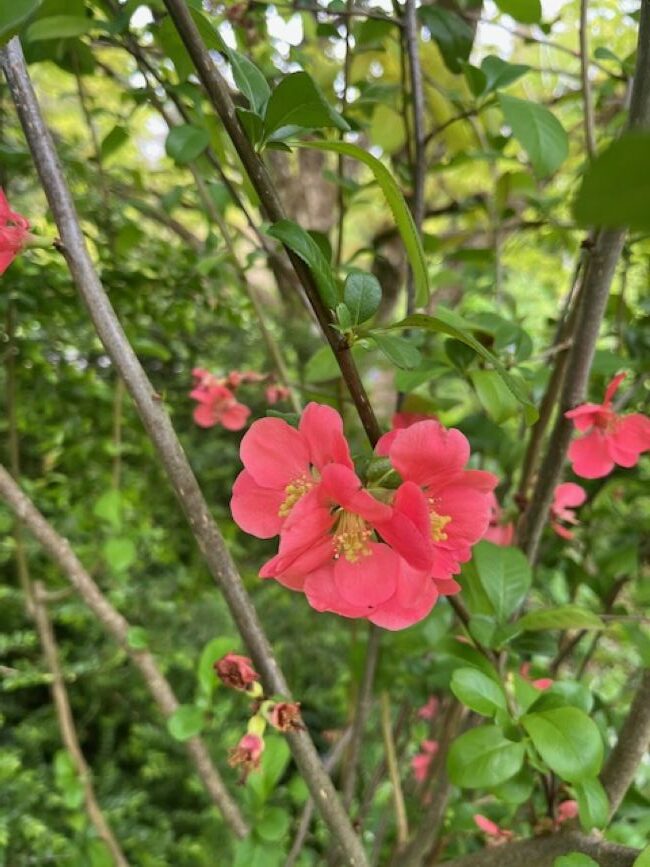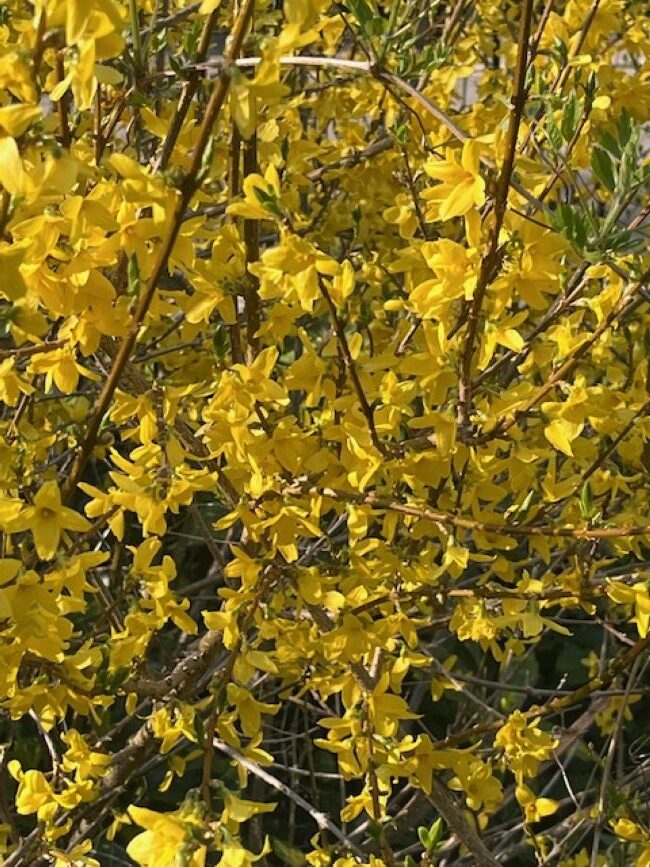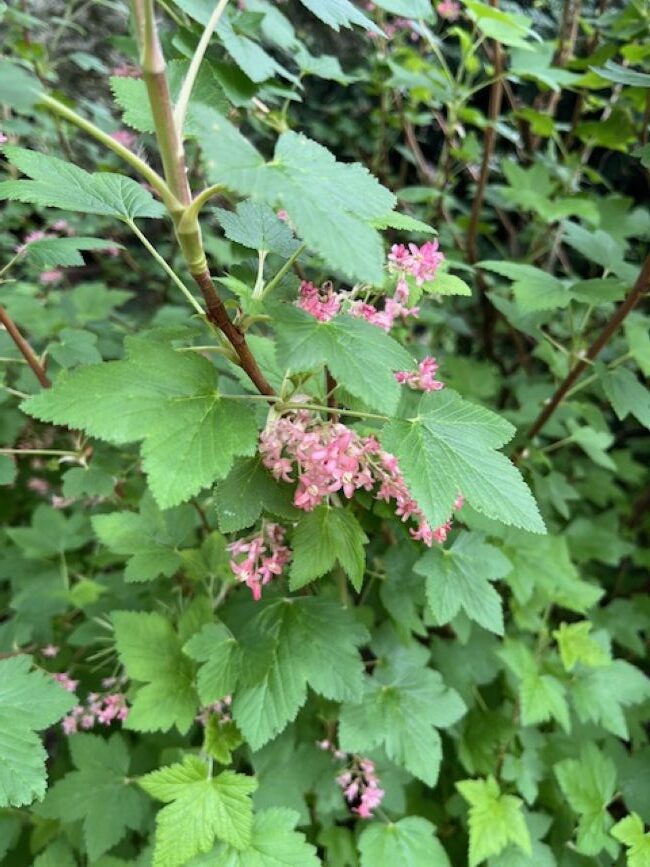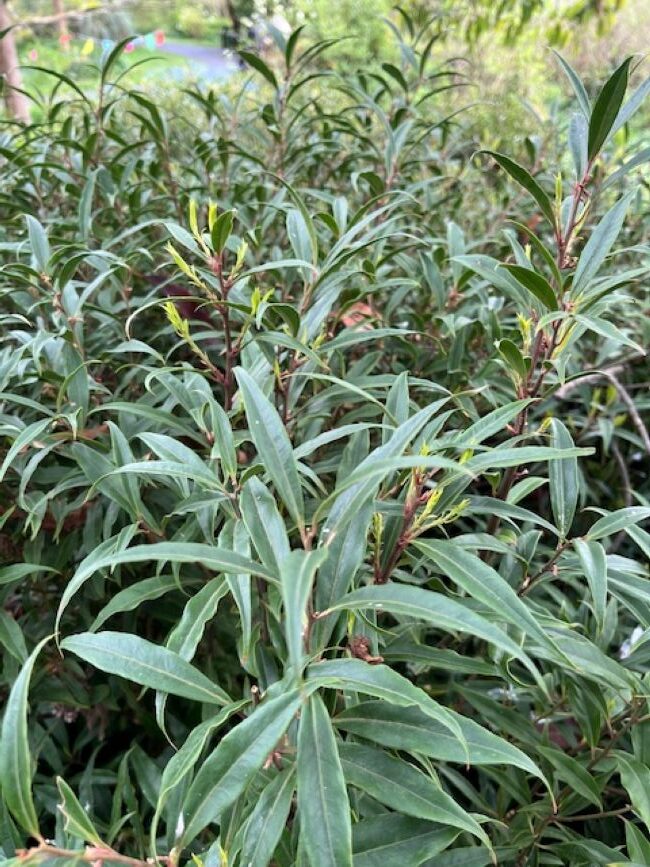Pruning Late Winter and Early Spring Flowering Plants






Why Timing and Technique Matter
As we head into late April, many of our winter and early spring flowering plants are finishing their seasonal displays. Now is the ideal time to turn your attention to pruning — not just for tidiness, but to set your plants up for an even better show next year.
Many popular garden shrubs like Ribes, Shenanomes, Sweetwood, Choisya, and Forsythia bloom on wood that was produced the previous growing season. That means pruning too early or too late can reduce the number of flowers next spring. The key is to prune after flowering has finished, giving the plant a full season to generate strong new growth that will carry next year’s blooms.
Likewise, some perennials such as Bergenia (elephant’s ear) form flower buds in late autumn and then bloom through late winter and early spring. While these might not need hard pruning, removing spent flowers and scruffy leaves helps keep the plant vigorous and healthy.
How to Prune Effectively
- Always start by removing any dead or damaged wood.
- Avoid giving your plants a ‘haircut’ — that is, general clipping that can reduce flowering. Instead, selectively prune out older stems at the base, encouraging new stems to form and maintain the plant’s natural shape.
- Feed after pruning: Apply a general-purpose feed like Grow More, and follow up through the growing season with a liquid feed such as Miracle-Gro to boost growth and flower production.
This selective and timely approach gives shrubs the best chance of producing lush, healthy growth and abundant flowers year after year.
If you’d like to build your confidence and deepen your understanding of pruning and plant care, consider enrolling in the GardenAdvice One Day Garden Course. It’s a practical, hands-on experience run in your own garden, tailored to your plants, your layout, and your goals.
Learn more and book your course at GardenAdvice.co.uk
Plant-by-Plant Pruning & Care Notes
1. Bergenia (Elephant’s Ear) Latin Name: Bergenia cordifolia
Care: Prefers partial shade and moist, well-drained soil. Apply a balanced fertiliser in spring and mulch to conserve moisture. Divide clumps every few years if they become congested.
Pruning: Remove faded flower stalks after blooming and any damaged or tatty leaves, especially after winter.
2. Chaenomeles (Flowering Quince)
- Latin Name: Chaenomeles speciosa or Chaenomeles japonica
- Pruning: Prune immediately after flowering. Cut back flowered shoots to a strong bud and thin out older, woody stems to promote fresh growth. Can be trained against walls or grown as a freestanding shrub.
- Care: Tolerates a range of soils but prefers sun to part shade. Feed with a general-purpose fertiliser after pruning to boost next year’s flower display.
3. Choisya (Mexican Orange Blossom)
- Pruning: Prune lightly after flowering, especially if it’s a spring-flowering variety like Choisya ternata. Remove one or two older stems at the base to encourage fresh growth.
- Care: Thrives in full sun and well-drained soil. Feed after pruning with a balanced fertiliser.
4. Forsythia
- Pruning: Prune immediately after flowering in spring. Cut back flowered stems to strong shoots lower down and remove up to a third of the oldest stems at ground level each year to rejuvenate.
- Care: Very low maintenance. Add a balanced fertiliser in spring and water during prolonged dry spells.
5. Ribes (Flowering Currant)
- Pruning: Best pruned right after flowering. Remove some of the older stems at the base and cut flowered stems back to a strong pair of buds.
- Care: Can get woody if left unpruned. A feed of Grow More or similar in early summer will keep it vigorous.
6. Sweetwood (Sarcococca)
- Pruning: Minimal pruning needed. Lightly trim after flowering if shaping is required. Remove any dead or wayward branches.
- Care: Happy in shade and moist soil. Apply mulch and feed in spring to encourage healthy growth and strong fragrance.




















